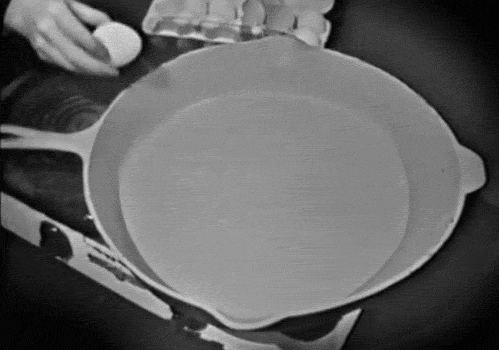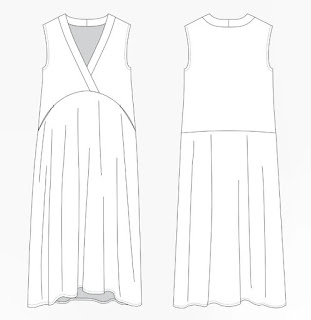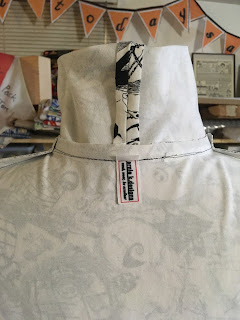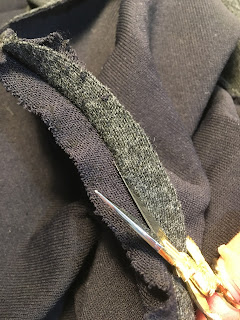I'm shocked I didn't write about this dress when I made it in 2019.
I think I just didn't want to dwell on another epic fail.
I had enough fabric leftover to make a couple of masks to go with it this year, so it got a little more love around the house.
 |
| Matching mask and dress. There are many matches when your stash is 95% novelty cotton |
I did wear it pretty frequently this summer. I do not like the pattern.
I really hated it at the time when I finished it.
Useful clues:
I had never made a Grainline pattern before this, I was not familiar with the fit profile.
Not useful clues:
I did not line it, because it doesn't need it. The collar/facing finishes itself and the inseam pockets are close to the outside seam and not big enough to need the internal support.
The measurements had enough slack in them to just make out without a toile.
It's a pullover dress for light woven fabrics.
HOW HARD CAN THIS BE?
 |
| Ernie Kovacs, from Giphy |
I love this Alexander Henry print, I love how the black collar really pops (which is why it lived in heavy rotation) and sets this fabric off. I love what the dress should look like.
And looking at the photos again, I can see where it went wrong and why it irritates me.
 |
Grainline illustration from website
|
Several makes of this dress, including the designer, has the same problem:
it's got a fin in the front.
http://www.stonelakeroad.com/home/2019/5/13/two-felix-dresses
https://grainlinestudio.com/collections/dresses/products/felix-dress?variant=22533591040082
When more than one person has the same issue, it's not operator error.
To figure out where this went wrong, I had to reverse engineer it. To see the pattern, I had to figure out when I had purchased it, and where I had put the PDF on my computer (or had I deleted it entirely in disgust? No, but I did toss the printed pattern.)??
 |
Grainline Patterns photo from website
|
I did find the photos, still unedited, in that month's folder.
I was really steamed about it, as the skirt stuck out in front like the photo below
(and this is the cut down version of this effect).
Hanging up in the website photo, the center is nice and flat, but there's a lot of skirt there. And the back of the skirt is coming forward to the front, just on the hanger. It's all pulling to the front.
 |
| My dress enters the room before I do |
 |
| Selfies from work last summer. Not my pinball machine. |
This is the problem
see that? I have a front fin and it hikes up in front. A lot.
I could not figure out why I have so much fabric in the front in relation to the bodice: I had cut the same size for the skirt as the bodice, and if I slipped up by a size, I wouldn't have that much (and it's a LOT) fabric in the front.
Now I have cut that down (and cut it down again), and it's manageable (mostly because I love the print/black contrast neckline). I tolerate it.
 |
I have a lot of process photos, but this one of adding the neck facing is going here because I like it.
|
I wore it a lot; that long v neck with the facing collar is very flattering, it feels good to wear (not every dress wears well in quilting cotton) and it's different from the usual subjects in my closet. The pockets are a bit short (almost 7" deep, not quite enough for a phone and all the potential volume).
I was going to trim down the front skirt, and continue that skirt gather to the back in a swoop
 |
| red line is new style line |
Like this
But this is not going to solve it.
 |
Aubrey Plaza for drama
|
So what do I think is the problem with this pattern?
The neckline/shoulder seams pull the dress up in front: also, the front v neck should be longer, the skirt/bodice seam is unequally curved. Mainly, it's out of balance from front to back.
I got the idea from Dressmaking Debacles.
http://dressmakingdebacles.blogspot.com/2018/08/grainline-felix.html
"I'm thinking the neck/shoulder fit on Grainline just doesn't work for me. I believe it's meant for a more erect back; the shoulder seam is WAY back on me and I do not have forward shoulders."
And she has the same issue with the skirt in the front.
The neckline is pulling the dress up and to the back.
Look at the selfie profile photo again (it hurts me to look, you go ahead)
The quantity of fabric in front isn't helping.
Oh dear.
I do like the style lines.
So, my solution is simple.
I will be adding these style/seam lines to an existing TNT a-line sheath pattern.
The more I look at the seam line between the bodice and the front skirt on this page, the more I see how it adds to the problem in the front. The top of the front skirt panel is too flat, relative to the width and curve of the bodice. It's not a lot, but just enough to create that front fin and skirt ride-up.
I could correct the pieces to make this adjustment, but then there's the angle of the bodice vs my torso. There's just too many moving parts to get them to fit. I'm really better off just tracing off a new TNT 'a line' dress pattern, drawing the style lines on it to add the deep v collar (faking the overlap which has no practical purpose) and adding seam allowances as necessitated by adding separate pieces.
I did add a tiny modesty panel at the base of the v neck, It's deep for me, as I am actually a pretty modest dresser. My skirts have crept up from shrinkage over the years; I do have some deep seated issues about my knees it seems.
In reconsidering this pattern, it does offer an opportunity to salvage another dress that's been lurking in the WIP pile.
Maybe that long flat facing 'collar' is a solution to this
I love novelty prints, but they can be overwhelming, and it's nice to break them up with a solid trim, or just embrace the insanity and add another print to the mix.
Percy will approve






















































